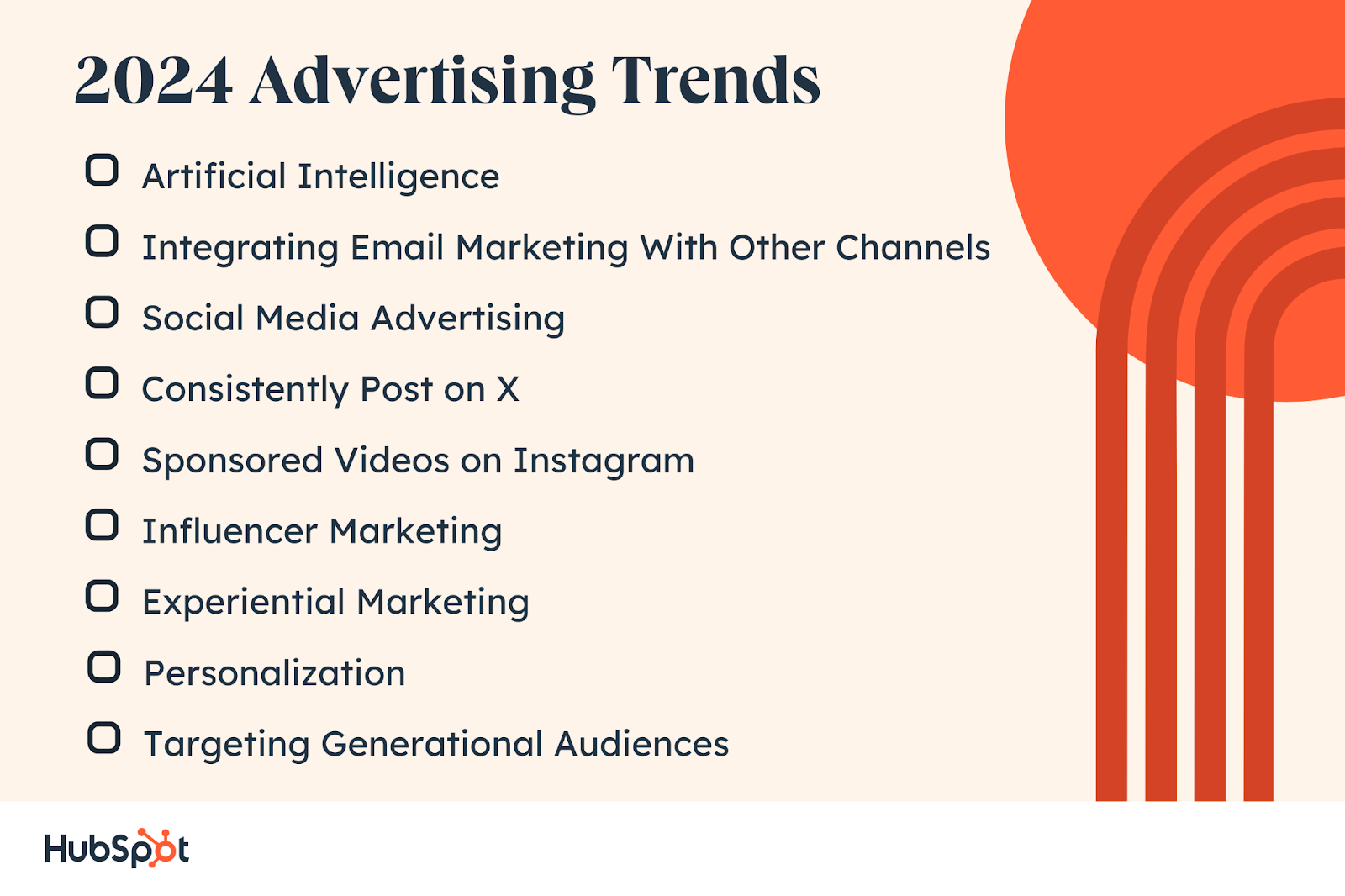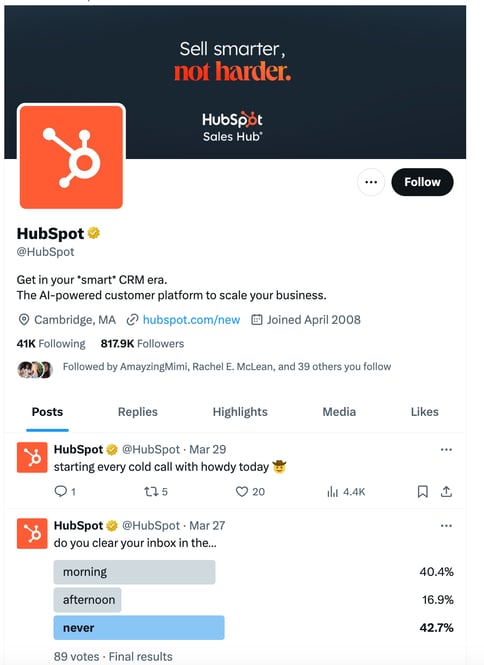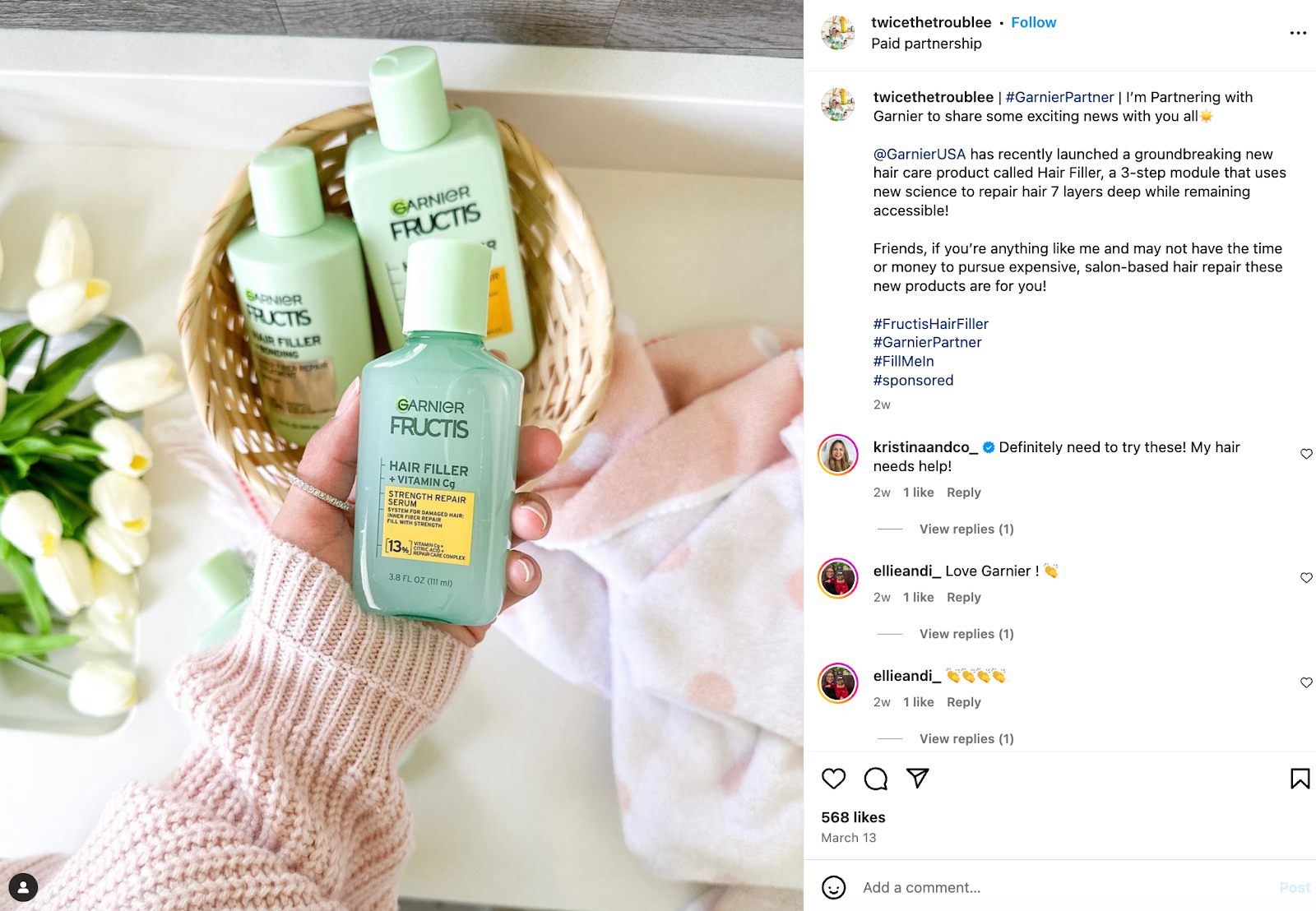9 Advertising Trends to Watch in 2024 [New Data + Expert Insights]
Advertising is an ever-changing beast — with those on ad and marketing teams working hard to stay ahead of trends.
In 2023, we saw the emergence of AI in all forms of content, the rise of personalization, augmented realities (including the metaverse), and the explosion of short-form video.
As a seasoned content marketer working in tech, I’ve noticed that advertising trends in 2024 seem to respond to the trends we saw in 2023.
For example, if my ad team was firmly against using artificial intelligence last year, I’d need to catch up with everyone who initially embraced it.
You might even be using AI without knowing it, with Google using AI in paid search to create relevant ads.
In 2024, advertisers will need to stay on top of trends, or their ad money won’t go as far. In this article, I’ll discuss upcoming advertising trends and how you can leverage these stats to increase engagement, value, and sales.
Digital Advertising Trends in 2024
Social Media Advertising Trends in 2024
Other Emerging Advertising Trends in 2024
Understanding Ad Trends in 2024
Digital Advertising Trends in 2024
While ad spending is predicted to spike in 2024, teams will likely be more responsible for how ads perform as companies tighten their budgets in anticipation of a recession.
Knowing and using the latest trends to your advantage can help you get more value out of the money you spend on advertising this year.

1. Artificial Intelligence
Artificial intelligence has existed, to some degree, for the last 70 years. Yet, it’s only in the last couple of years that it’s become a mainstream idea in the advertising space.
Many business leaders believe we underestimate AI’s impact on companies, with 65% reporting that AI will rival the Industrial Revolution in its impact on productivity.
What does this mean for you?
In 2024, AI will be one of the best ways businesses can scale their growth and increase the quality of their advertisements.
If you want to leverage AI more than you currently do, consider hiring an AI expert or consultant to help you integrate AI into your work processes and advertising efforts.
I may not have an AI expert on staff, but I definitely experiment with these new tools to see where they work best. I’m not alone. HubSpot Program Manager Kaitlin Milliken also takes the time to test AI solutions like ChatGPT.
“AI may not be the best at coming up with creative concepts or writing the copy itself, but I use AI to eliminate manual tasks and supplement my skills,” Milliken says. “I had to work with large sets of images for a project. I used ChatGPT to create a Python script that managed the files for me. That’s saved me hours.”
If you don’t have the budget to hire an AI expert right now, there’s no reason why you can’t start consulting AI programs like Gemini or ChatGPT during every stage of the advertising process.
I like to use AI during brainstorming, ideation, content writing, planning, and more. Check out this blog on AI in Digital Marketing for more information.
2. Integrating Email Marketing With Other Channels
“While 87% report email is critical to their success, only 24% of email marketing programs are integrated into other marketing channels.” (Litmus)
It’s no secret that email marketing has one of the best ROIs of any digital marketing channel. Unfortunately, most marketing teams aren’t integrating email marketing programs into other marketing channels, limiting email’s impact.
How can you integrate email into your other marketing channels?
The first step to successfully integrating email programs into other channels is segmenting your lists (of emails) by audience type and making sure advertisements and content fit their needs.
For example, in my email lists, I will segment by industry, size of their business, products purchased in the past, and areas of interest. If you don’t know the answers to these questions, adjust your forms to require these questions.
Once you’ve segmented, you will then want to optimize your email delivery and automate your distribution. If you’re running an advertisement that’s costing you a fortune in PPC, be sure those on your email lists know about it first.
For more ideas on integrating email campaigns, check out this blog here.
3. Social Media Advertising
“Facebook, Instagram, YouTube, and TikTok have the strongest ROI — and these align with where marketers are investing in 2024.” (HubSpot State of Marketing)
I’ve found that where I choose to display my ads is just as important as the actual ads. If you’re not currently investing in one of these platforms, there’s a good chance you’re missing out on potential leads.
In fact, 27% of marketers who don’t use YouTube plan to start in the year ahead.
There’s also the looming possibility of the U.S. government banning TikTok, which could, in turn, skyrocket the cost of advertising on remaining platforms and oversaturate those markets if you aren’t ahead of the curve.
How can you get a strong ROI from social media platforms?
In 2024, a deep understanding of social media buying is vital for getting a good ad ROI. Careful planning and organization will ensure you’re investing in the right platforms. Check out this free media buying template to get started.
Be sure to monitor your ads’ performance to identify which platform provides the best bang for your buck. If a certain platform is lagging, consider investing in organic content marketing on that website instead of paid ads.
Social Media Advertising Trends in 2024
Creating a video-centric social media strategy might be the most crucial trend you will follow in 2024.
While certain social media platforms have always favored video (Youtube, TikTok, etc.), platforms that haven’t always done so now do favor video (Instagram, Facebook, X). Here are some social media ad trends you need to know.
4. Consistently Post on X
“66% of marketers will keep their brand on Twitter/X.” (HubSpot)
Despite Twitter’s rebranding to X and extensive layoffs last year by owner Elon Musk, the majority of marketers intend to keep their brand on X.
This is likely due to how simple the app is to use for quick updates, PR, and conversion, even with minimal time and money.

How should you use X in 2024?
Consistent posting is one of the most important strategies when using the app. X also has an ad share revenue program for those who meet the requirements. In my experience, an active account on X can boost brand awareness while not costing you a lot of time.
While X certainly shouldn’t be your business’ only social media, nor its main focus, it’s great for the quick tweet here and there.
Remember, X is all about what’s going on right now, so don’t spend too much time on evergreen content; rather, share the latest news. Check out this blog to discover more ways to use X in 2024.
5. Sponsored Videos on Instagram
“82% post video content on Instagram, and the content formats they use most are video-based.” (HubSpot)
There are two different types of video ads that marketers can use on Instagram: traditional advertisements, which can be static images or videos, and sponsored video content.
Sponsored video content is when your brand pays an influencer with either product, money, or both to talk about your brand. Most social media platforms require influencers to use hashtags that identify the video as a paid advertisement so viewers will know that the influencer was compensated to say what they’re saying.
Why Sponsored Video Content Works on Instagram
Many have speculated that Instagram changed its algorithm to favor video content as a response to the growing popularity of TikTok.
With the introduction of the “Instagram Reels” feature, brands have begun publishing short-form video content on the app.
2024 is likely to bring a lot of competition to the Instagram Reels scene, particularly if a TikTok ban does occur. So get started on posting on Instagram today with these helpful tips.
6. Influencer Marketing
“30% of brands already work with influencers/creators, and 42% plan to begin this year.” (HubSpot Instagram Marketing Report)
Influencer content is predicted to have a high ROI in 2024, so it makes sense that more brands plan to work closely with creators. There are many ways to work with influencers.
While most influencer-involved content has to be labeled as an advertisement, you move into the gray area of advertising by sending influencers Public Relationship (PR) boxes.
PR boxes are a way for influencers to try new products and give their honest review. However, there’s no guarantee that they will review your PR box, so be sure to do your homework and pay careful attention to personalization.
Check out this blog on influencer marketing in 2024 for more ideas.
Influencer Content Example: How a Tarte trip to Bora Bora took over TikTok
Tarte, as a brand, has worked closely with influencers since 2015, with budgets for the trip getting larger over the years. The 2024 Tarte trip included flying around 30 influencers and their plus ones to a retreat in Bora Bora.
CEO and founder of Tarte, Maureen Kelly, explains their strategy, stating, “The idea from the beginning was to invite innovative creators from all over the world to join us in an intimate setting where they can relax, and I can connect with them 1:1. This time together builds deeper relationships and strengthens the story behind the brand.”
Because so many famous TikTok influencers were on the Tarte trip, everyone’s “for you” feed was flooded with Tarte-sponsored content.
While the Tarte trip must have cost a pretty penny, in my opinion, they likely made this back tenfold with the brand and product awareness they got.
Other Emerging Advertising Trends in 2024
Other ad trends in 2024 include marketers’ preferred audiences, experiential marketing, and the importance of personalization. Keep reading to learn about other emerging trends in advertising.
7. Experiential Marketing
“16% of marketers plan to try experiential marketing (engaging audiences in real life with pop-ups and events) for the first time.” (HubSpot)
Experiential marketing is the actual experience your audience has at events, trade shows, or during campaigns.
The 2020 pandemic canceled most in-person events or forced marketers to make them virtual events, putting experiential marketing in the back seat.
However, now that restrictions have been lifted, experiential marketing is having a hay day, with 77% of marketers using it as a key part of their plan.
How can you use experiential marketing in 2024?
If you’re planning on attending any shows this year, make sure your booth is both eye-catching and memorable. If you’re marketing a new product this year, think outside the box and really consider your user experience.
Some past experiential campaigns have included branded filters on social media, fun pop-up shops, interactive content, giveaways, and more. You might also consider how virtual reality can improve your marketing.
8. Personalization
“73% of marketers say personalization is important, but only 35% believe their customers get a very personalized experience from their brand.” (HubSpot State of Marketing)
Personalization is an important aspect of marketing in 2024 because most industries are supersaturated with similar products, and it’s getting harder to stand out.
While creating a personalized experience can be time-consuming, there are now several tools that can assist in the process.
For example, I was once contacted by a marketer from Reachdesk (a company that specializes in personal gifting), and the marketer sent me a watercolor set because my profile described my love of painting.
This attention to detail and personalization got my attention and my interest in their product. If you’re new to personalization and want to consult an expert, consider trying Hubspot’s Technical Consulting.
Check out this blog to explore more brands that take personalization seriously.
What does personalization look like in 2024?
In 2024, personalization looks like full names in email subject lines, abandoned shopping cart emails/texts with discount codes, product recommendations based on search history, chatbots to customize web experiences, and more.
To ensure your customers are getting the best-personalized experience, consider sending out surveys that ask customers how easily they can navigate your website and what features they’d like to see added.
9. Targeting Generational Audiences
“74% of marketers want to reach Millenials, 67% want to reach Gen X, and only 27% are interested in Baby Boomer audiences.” (HubSpot State of Marketing)
Generations that grew up using the internet are increasingly the target of marketers. Seen as “digital natives,” millennials and Gen X are often key decision-makers with purchasing power at organizations.
In my opinion, this trend is likely due to marketing largely taking place online versus traditional advertising means, which had more in-person meetings and physical advertisements.
How can you reach digital natives in 2024?
The best way to reach each generation is to understand what kind of advertising works for them. Millennials primarily engage with social media, apps, and brands that care about social issues.
Gen X prefers to discover products through search, TV ads, and specific social media platforms (Facebook, YouTube, and Instagram). These trends make social media an important investment for companies hoping to reach digital natives.
Only 4% of boomers have purchased a product through social media, while TV ads, internet searches, and retail stores work better for their generation. Check out this blog on how each generation shops for more ideas.
Understanding Ad Trends in 2024
Staying on top of trends is an important part of any marketer or advertiser’s job description. I’ve found it super helpful to subscribe to or follow the HubSpot Blog so I get the latest stats on which trends are working and which ones to avoid.
Some aspects of marketing will never change, such as solving customer problems and “making sure that the customer is representative of a large market” so you can “have a pretty good formula,” as Melanie Perkins advises.
As you solve customer problems and try the latest trends this next year, be sure to be consistent in your efforts, track your results, and stay open to new ideas.
![]()


![Download Now: Free State of Marketing Report [Updated for 2024]](https://no-cache.hubspot.com/cta/default/53/db725f24-564c-483b-a28c-2d6ff9986516.png)


